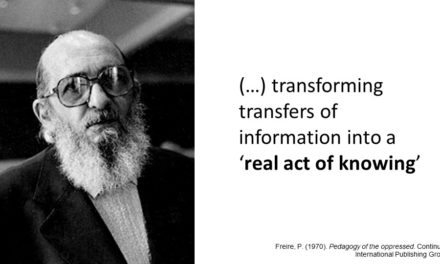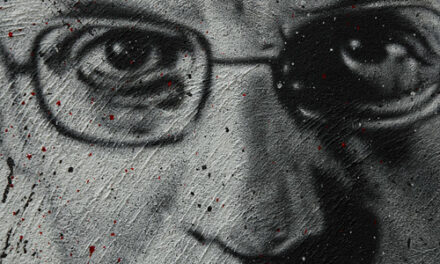Any talk of the relational world must inevitably at some stage come back to religion, a regulatory mechanism of real force in intersubjective dynamics, an influence obvious in so many facets of social and cultural life. the website Dirty Looks has already explored this influence to some extent, particularly in relation to secular forms of martyrdom and demonic possession. These examples suggest that religious understandings of the world have emotional resonance that warrants further exploration.
Of courses such exploration has been carried out before in various guises, no more so than in Karl Marx’s famous denunciation of religion as the ‘opium of the people’. This quote, originally from his 1843 work Contribution to Critique of Hegel’s Philosophy of Right (an outline of Hegel’s own political philosophy and theory of the state and important starting point for Marx’s own political philosophy), was written in the context of sweeping industrialisation, a process accompanied by a brutal shift into a world of factories, production lines and heavy machinery. For Marx, organised religion offered a way to kill the pain and sedate the stress of experiencing capitalism at its worst – a new system suffering the mighty birth pangs of its infancy.
Marx being Marx, however, his take on religion was much more subtle than given credit for, which can be witnessed in the following text that formed part of the same paper:
The foundation of irreligious criticism is: Man makes religion, religion does not make man. Religion is, indeed, the self-consciousness and self-esteem of man who has either not yet won through to himself, or has already lost himself again. But man is no abstract being squatting outside the world. Man is the world of man – state, society. This state and this society produce religion, which is an inverted consciousness of the world, because they are an inverted world. Religion is the general theory of this world, its encyclopaedic compendium, its logic in popular form, its spiritual point d’honneur, its enthusiasm, its moral sanction, its solemn complement, and its universal basis of consolation and justification. It is the fantastic realization of the human essence since the human essence has not acquired any true reality. The struggle against religion is, therefore, indirectly the struggle against that world whose spiritual aroma is religion.
He continues…
Religious suffering is, at one and the same time, the expression of real suffering and a protest against real suffering. Religion is the sigh of the oppressed creature, the heart of a heartless world, and the soul of soulless conditions. It is the opium of the people.
It is evident from these quotes that Marx was not blind to the emotional power of religion, even as he denounced its role as a patsy to capital. He understood that religious forms of meaning and expression were a source of solace to the masses. They were also in his opinion a source of false consciousness, a false consciousness in the shape of a ‘vale of tears of which religion is the halo’.
The ‘vale of tears’ metaphor (Marx knew his theology and his latin, valle lacrimarum) was a brilliant way of describing the attraction that religion offered to people and its hold on their emotional lives. But for all his eloquence and insight into the drudgery of industrial life and the pull of the sacred, Marx was guilty of neglecting another crucial aspect of this historical shift, a blind spot in his theory of historical materialism that others have since tried hard to rectify. Marx is indeed right to state that ‘[m]an makes

English: Photograph taken at the Washington National Cathedral of the Moses window by Lawrence Saint This window depicts the three stages of the life of Moses, each of them being 40 years long. The first 40 years is depicted in the left panel, when Moses is a prince in Egypt. The next 40 years is depicted in the right panel, which is Moses before Pharaoh. The last 40 years depicts Moses with the 10 Commandments, representative of his time with the Israelites in the wilderness as a lawgiver. (Photo credit: Wikipedia)
religion, religion does not make man’. But for all his talk of inverted worlds, he was guilty of neglecting the converted world, a world at the centre of religious power and influence. The mass conversion of people to the cause and value systems of religious beliefs was not just a conversion of individuals; it was also and more importantly a conversion of the relational sphere. As well as offering solace to the poor huddled masses, religion via its commandments, callings and vocations has significant relational clout, tapping into the desire to be witnessed and to forgive and to be forgiven. It provides a regulatory mechanism for guilt and shame and a clear formalised alternative to the fragile codifiers in the messy world of the relational. Religion fills in the gaps of relational uncertainty and therefore succeeds at what nationhood and capitalism can only dream of – capturing the hearts and minds of people en masse. And no wonder; it offers a ready-made sense of relational place, an answer to the prayers of those who seek sanctuary from the gaze of others whose moral bearings tend to come with the suspicion of arbitrary judgement. Religious commandments of whatever type provide a regulatory mechanism by which the relational world can be tamed and some order brought to bear on its more anarchic tendencies.
This is the sometimes forgotten truth as to why religion is still popular today: the vale of tears may be good at hiding a multitude of sins on behalf of capital, but it’s also very effective at hiding the sins of our fathers, mothers and everyone else.
[this post was previously published on Dirty Looks]












While this is all true, I think there are two other important reasons for religion’s longevity. First, the existence of religious professionals such as priests, whose livelihoods depend on their success at inculcating and maintaining laypeople’s religious beliefs and at getting themselves recognised as indispensable authorities on how to be a good believer. This involves producing different sorts of religious discourses for different audiences (the gods of bureaucrats are different from the gods of billionaires or farm workers). These producers and merchants of the goods of salvation are a social force in their own right, and one that mysteriously disappears in analyses that make religion seem to appear by itself out of thin air. This is why Weber, and Bourdieu after him, focused on the professional self-interest of priests, prophets, and sorcerers in their theoretical work on religion. And second, the fact that much of the work of these professionals is aimed at an audience of children, who are perhaps the most numerous and most easily influenced consumers of religious concepts. It is rare for people to lose the religious faith they were raised with, and this explains the massive and efforts of priests and parents to indoctrinate children.
It is absolutely true that human makes the religion, religion can’t make human. But sometimes the same religion cost heavily to the humans.